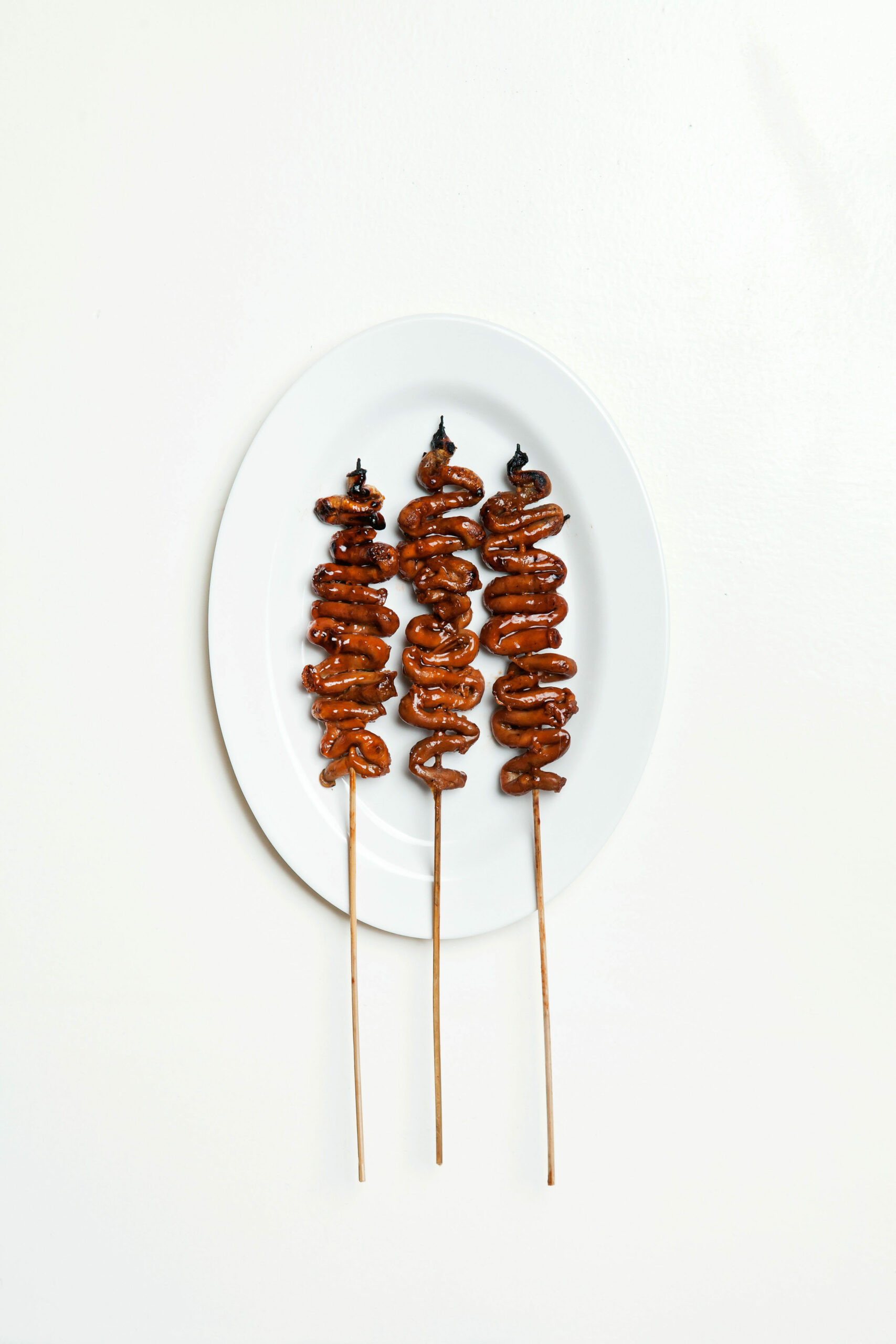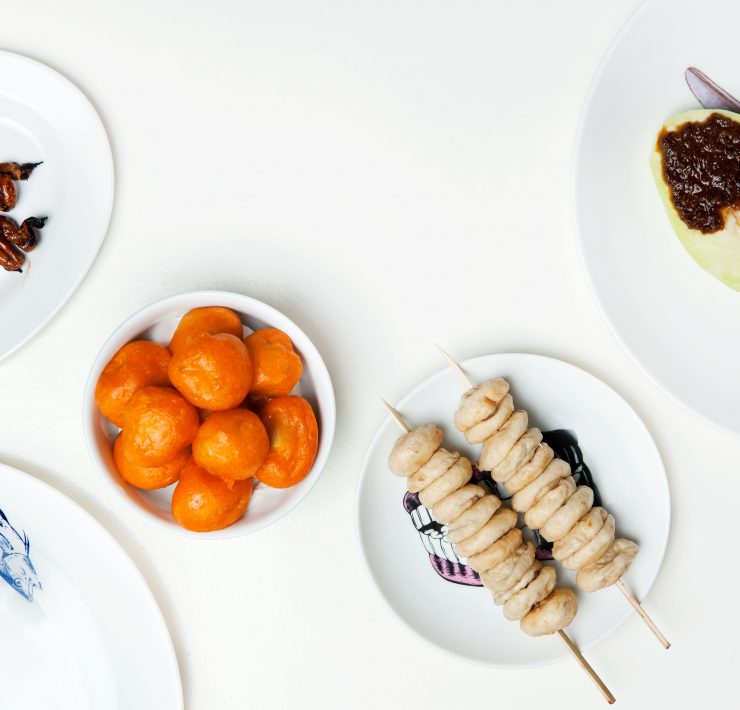Street food in the Philippines is a way of life and, at times, a point of contention. Despite strides Filipino food has been making overseas, particularly in the United States, our local food continues to invite foreigners to provide strongly worded opinions about the cuisine, with a female writer once calling Filipino food “the worst in Asia.” One travel blogger, in particular, singled out our street food, who said she’d “rather starve” than eat it again.
While these incendiary reactions stoked online ire, allow me to pose a thought. Part of the reason why our street food does not fare well with tourists is the fact that these humble dishes are intrinsically local, serving local needs: societal nuances and complications included.
Revisiting Manila’s street food, from Doreen Gamboa-Fernandez’s ‘Tikim’
Although other cities such as Bangkok may have mastered the art of making their street-peddled dishes palatable to foreign visitors, the bowls and skewers that characterize Manila’s street food are borne out of urban grit and a need for survival. As Doreen Gamboa Fernandez writes in her essay on street food, Balut to Barbecue, “Street food in the Philippines is not only a convenience for those without time to cook, or an economic phenomenon that flourishes during hard times. It is a lifestyle.”
Although other cities such as Bangkok may have mastered the art of making their street-peddled dishes palatable to foreign visitors, the bowls and skewers that characterize Manila’s version are borne out of urban grit and a need for survival.
Largely catering to the working class, street carts and stalls are set up in jeepney and bus terminals, outskirts of residential neighborhoods, as well as on the sites of schools, workplaces, marketplaces, or even churches—typically away from the usual tourist stomping grounds. Street food is meant to be extremely affordable and convenient for the mobile commuter. Hence, day-old chicks, wiry intestines skewered on sticks, pig ears, and all things brown and charred may not make for the most appetizing delicacies for outsiders making their foray into the cuisine and expecting to be wowed.
Existing between time and space

Published in the ’90s, Fernandez’s view on street food in her essay is still largely reflective of the magnitude with which street food has grown today. Save for some minute details that date the material (the UP Shopping Center, which was lost to a fire in 2018, stands no more), the late food historian’s observations on street food as a culture remain: folded tables in residential neighborhoods; the array of eateries in bus terminals; cheap eats being sold at offices, schools, and construction sites; and “walking” street food such as peanuts or taho being sold by mobile vendors carrying baskets, often cheap morsels that take little to no time to assemble.
Compare this to the quintessential Filipino eating habits, usually bound by proper meals depending on the time of day. These mealtimes are typically taken sitting down at a dining table at home: agahan for umaga (morning); tanghalian for tanghali (noontime); hapunan for hapon (afternoon/evening). “Kumain nang tatlong beses sa isang araw” (Eat three times a day) is a baseline one hopes to achieve while straddling the poverty line, indicating that one has at least been fed well.
Being fast, cheap, and mobile can mean that street food serves an individual eater’s needs, who are usually relegated to one side as they quickly scarf down their snacks without a word.
Meanwhile, sitting squarely within that gray area of time and space exists street food. With its stalls taking up no more than a few square meters, one can be seated at a makeshift bench and monobloc table beside a cart on a sidewalk or simply stand up even as orders have arrived.
Being fast, cheap, and mobile can mean that street food serves an individual eater’s needs, who are usually relegated to one side as they quickly scarf down their snacks without a word. Yet while its very concept is used to bridge hungers (“pangtawid gutom” as Fernandez calls it), one can also use it to substitute a proper meal altogether.
Fernandez writes, “The snacks on the street fill this function, and perhaps this is why they are not considered ‘serious’ meals and are given ‘unserious’ meals like ‘Adidas,’ ‘helmet,’ and ‘Walkman.’”

Then there is the pack-up-and-go nature of its peddlers’ carts and stalls as well as the transient state of its eaters. As many vendors are not confined to a single location, whether of their own accord or of the locale’s changing permits and regulations, so are its patrons. This type of food becomes a go-to for workers on the clock, students stalling time before heading home, or passengers grabbing a quick bite before the bus leaves. It may be a stopover, but hardly the final destination—that is to say, a proper “mealtime” at home that allows individuals to reconnect with their family members.
Redefining the concept of ‘street’ in street food
Street food in the Philippines is still largely a small, fast, and cash-based operation for its vendors. Many of these establishments are family-run, earning just enough to afford a day’s meals for the family, enough cash profit for the next day’s capital, and a little extra.
Then, the pandemic occurred. While at its most fundamental definition, street food refers to food found on the street, recent times show that the lines between street and non-street food continue to blur.
Even in its digital reinvention, street food remained unbound by time, space, and concept.
As lockdowns introduced massive disruptions, this introduced an inadvertent cultural shift in how street food exists in the metro. With tightened mobility and border issues, street food was no longer relegated to the physical confines of being on the street or out of the open. The transient nature of street food in its most literal sense had been challenged, with remote work and school being the norm, with no jeepneys or other modes of public transport plying the roads.
Instead, pandemic businesses popped up left and right, beating the cabin fever of being confined at home while simultaneously acknowledging people’s needs for comfort meals at a time of uncertainty. Establishments of all sizes headily adapted online, as avenues such as Facebook Marketplace and online delivery platforms such as GrabFood and Foodpanda thrived.

Yet even in a peculiar time, street food remained fast, cheap, and mobile. Social media is free and easy to use, allowing carinderia owners and ihaw stall operators to hop on and pivot. Even in its digital reinvention, street food remained unbound by time, space, and concept: people ordered arroz caldo, isaw, pares, pork barbecue, and other cheap and filling eats, once consumed on the side of the streets, but now delivered by mobile riders plying them instead at virtually any time of the day.
With restrictions largely loosening since then, many of these street food businesses have returned to their physical setups. Meanwhile, those who have chosen to adapt to the new times maintained its online presence—diversifying the ways it could cater to a changed diner profile and its social media accounts.
And as cities such as Metro Manila continue to redefine the bounds of time and space, shaped by ever-changing factors, street food will be there to fill the bellies of its evolving locale.
If communal home dining is the beating heart of Filipino cuisine, then street food is its artery. Needing no explanation or justification with outsiders of the culture, it permeates the city’s nooks and crannies, fueling the city’s hustlers and showcases a slice of daily life: from the rushing office worker in Makati lining up for a plate of sisig before lunch break ends, to the Bicolano transplant selling their family’s laing recipe along a roadside carinderia.
These represent the stories of struggle, survival, and a nation’s sensibilities, all taking place within the crevices of the metro with which its locals inhabit and live out their daily existence. And as cities such as Metro Manila continue to redefine the bounds of time and space, shaped by ever-changing factors, street food will be there to fill the bellies of its evolving locale.





